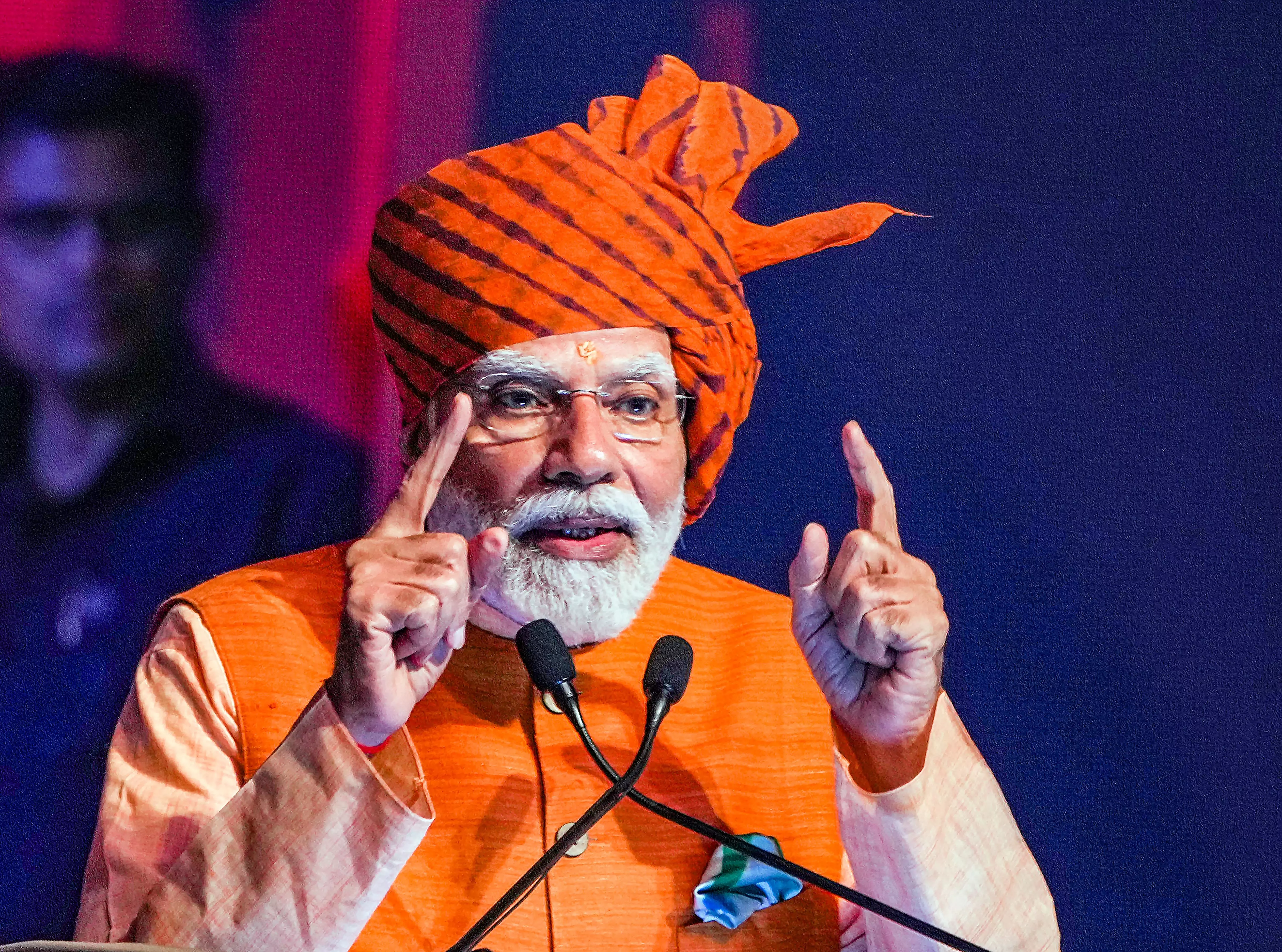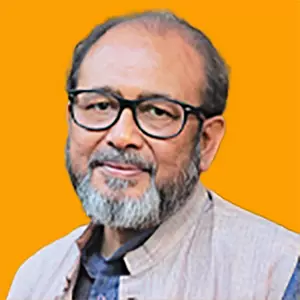
- Home
- India
- World
- Premium
- THE FEDERAL SPECIAL
- Analysis
- States
- Perspective
- Videos
- Sports
- Education
- Entertainment
- Elections
- Features
- Health
- Business
- Series
- In memoriam: Sheikh Mujibur Rahman
- Bishnoi's Men
- NEET TANGLE
- Economy Series
- Earth Day
- Kashmir’s Frozen Turbulence
- India@75
- The legend of Ramjanmabhoomi
- Liberalisation@30
- How to tame a dragon
- Celebrating biodiversity
- Farm Matters
- 50 days of solitude
- Bringing Migrants Home
- Budget 2020
- Jharkhand Votes
- The Federal Investigates
- The Federal Impact
- Vanishing Sand
- Gandhi @ 150
- Andhra Today
- Field report
- Operation Gulmarg
- Pandemic @1 Mn in India
- The Federal Year-End
- The Zero Year
- Science
- Brand studio
- Newsletter
- Elections 2024
- Events
- Home
- IndiaIndia
- World
- Analysis
- StatesStates
- PerspectivePerspective
- VideosVideos
- Sports
- Education
- Entertainment
- ElectionsElections
- Features
- Health
- BusinessBusiness
- Premium
- Loading...
Premium - Events

Fear that 'divisive forces' may use caste, regional faultlines against them in LS polls reflects Parivar’s anxiety about fresh bout of caste fissures in country
The speeches of Prime Minister Narendra Modi and Rashtriya Swayamsevak Sangh’s sarsanghchalak, Mohan Bhagwat, on the occasion of Dussehra or Vijay Dashami, were conspicuous in their articulation of a shared fear: ‘divisive forces’ using caste and regional fault lines to their detriment in next year’s elections.
Such verbalisation is, however, replete with irony for a political fraternity which acquired stranglehold on the nation’s polity by unrelentingly pitting citizens from different communities against one another, solely on the basis of religious identity.
Religion Vs caste, region
Bhagwat, in his traditional Vijay Dashami speech at the Rashtriya Swayamsevak Sangh (RSS) headquarters in Nagpur in the morning, pointed to the threat from the Sangh Parivar’s old scourge of antagonism among Hindus on the basis of caste in a roundabout manner. His assertion however was implicit, leaving no doubt of the message: that during next year’s parliamentary elections, attempts shall be made “to harvest votes by inflaming emotions.”
Modi in contrast was more forthright, at least regarding escalation of animosity on the basis of caste. In his speech at a Ramlila venue in Delhi where he fired the symbolic arrow to ignite the effigy of Ravana, representation of evil in the most popular version of the Ramayan, the prime minister called to ensure that it is not just the dummy (of Ravana) that should be burnt. “The destruction should be of those forces who attempt to divide society on the basis of casteism and regionalism,” he said.
Ayodhya Ram temple to the rescue
Another common theme to the two leaders, who aim to lead the BJP (Bhagwat will be backstage) to a record-matching third consecutive electoral victory, was the impending inauguration of the Ram temple at Ayodhya.
For Modi, this occasion – January 22, 2024 – as mentioned passingly in media reports and confirmed by Bhagwat in his speech, would mark “victory of people’s patience”. Declaring that “Lord Ram is coming,” Modi asked people to “imagine the joy when after centuries of wait, the statue of Lord Ram will be installed in the Ram temple”.
Underscoring his constant attempt to connect significant strides made in diverse sectors with divinity, the prime minister claimed that the construction of the Ram temple in Ayodhya was being done amid "auspicious developments". He listed the successful lunar mission, inauguration of the new Parliament building, and enactment of the women's reservation law these propitious omens.
Bhagwat too exuded a sense of accomplishment at the Ram temple construction nearing completion. He called upon citizens to mark the consecration with similar events in various places across the country.
He said this would “awaken the Ram of one's mind in every heart, and embellish the Ayodhya of the mind, creating an atmosphere of affection, responsibility, and goodwill in the society.” The intention is to organise countless functions mirroring the event in Ayodhya and hope this transforms into electoral support for the BJP in the parliamentary elections.
But the call to arouse the deity within oneself could also be perceived by many as a standard dog-whistle which leaders of the Sangh Parivar blow frequently.
Behind Bhagwat’s paeans for Modi
Within the RSS fraternity, the sarsanghchalak’s Vijay Dashami speech was traditionally the year’s all-important sermon in which the chief of the moment provided indication of issues to be prioritised by swayamsevaks and members of other affiliated organisations.
While the symbolic value remains – it has since 2014 been telecast live on a large number of news channel, including Doordarshan News – quite often Modi’s engagements on the day secured greater coverage.
This has greatly to do with the altered relationship between the two offices that Modi and Bhagwat hold. From when the RSS chief was seen as the ‘Big Brother’ based in Nagpur, Modi is now the most popular and powerful leader within the saffron clan.
An acceptance of changed hierarchy was evident in Bhagwat’s endorsement and praise for several government decisions and events under its watch.
From lavishing admiration on the manner the government hosted the G-20 Summit and claiming that it was due to Modi’s push that “our guiding principle of 'Vasudhaiva Kutumbakam' has now been incorporated in the philosophy of the entire world,” Bhagwat also referred to the performance of Indian sportsperson in the Asian Games and the success of the Chandrayaan-3 mission which was lauded for showcasing the country’s “strength, intelligence and tact.”
Unambiguously lauding the government, the Sarsanghchalak claimed that the “will of the nation’s leadership seamlessly combined with the scientific knowledge and technical prowess of our scientists.” It is evident, the era of veiled criticism of the BJP or even implicit suggestions regarding choices and decisions to be made, is over.
Backing govt on Manipur
The RSS now merely puts its stamp of approval much after the deed has been done. Even on issues over which the government has been found wanting, as on handling inter-community conflict in Manipur, the sarsanghchalak absolved the prime minister and his team.
He asked: “How did this mutual discord and hatred suddenly erupt in Manipur, which had been peaceful for almost a decade? Were there extremists from across the border also among those who committed violence?...Who has a vested interest in trying to drag and besmirch an organisation like the RSS, which has been engaged in serving everyone without any bias for years, into this unfortunate incident without any reason?”
There were several contradictions and instances of double-speak too in Bhagwat’s discourse. He contended that it was “a natural desire” for people to safeguard their primary identity, and that despite the world becoming more tightly intertwined, “nations are increasingly becoming worried about their inherent identities.”
Continuing he said that, “attempts to paint the entire world in the same colour or to achieve uniformity haven’t succeeded so far, nor will they succeed in the future.”
Is this not completely contradictory to the RSS drive to homogenize Indians who are part of one nation despite multiple beliefs, cultures, food habits, attires, regions and above all regions? Does not the Sangh Parivar propagate unitarism in the country?
Bhagwat also throws in a new concept, that of “cultural Marxists or woke” to ensure that the idea of “urban Naxals” resonates in the mind of the faithful again.
While the shoe is on the side of those heading the regime, the sarsanghchalak once again spoke of a conspiracy of his ideological adversaries. He alluded to a “modus operandi” that takes control of “the media and academia, and plunging education, culture, politics and social environment into confusion, chaos, and corruption.”
The challenges that both Modi and Bhagwat depicted are actually indicative of the anxiety of caste fissures rearing their head once again, in the wake of the caste survey done by the Bihar government and partners of the INDIA alliance pledging to hold a caste-based census in the event of being elected in the states where polls are impending and later in the country.
It is worth recalling that the Hindu unity which the RSS-BJP combine forged in 1989-1990 through the agitation for Ram temple had fractured in the wake of the Mandal award by the VP Singh government. Quite clearly, a repeat of that phenomenon is not being completely ruled out by Modi-Bhagwat duo.
Undeniably, the speeches of Modi as well as Bhagwat are important not just for what they said, but also what was left unsaid.
(Nilanjan Mukhopadhyay’s latest book is 'The Demolition and the Verdict: Ayodhya and the Project to Reconfigure India'. His other books include 'The RSS: Icons of the Indian Right' and 'Narendra Modi: The Man, The Times'. He tweets at @NilanjanUdwin.)
(The Federal seeks to present views and opinions from all sides of the spectrum. The information, ideas or opinions in the articles are of the author and do not necessarily reflect the views of The Federal.)


